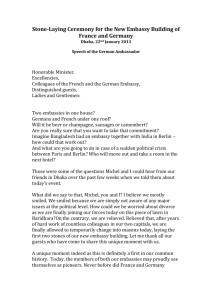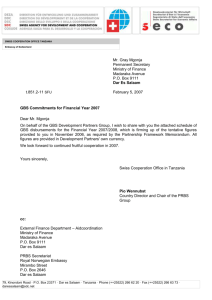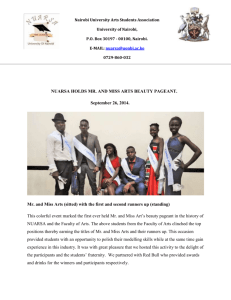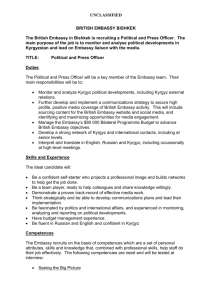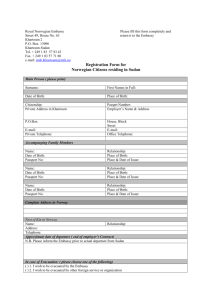Embassy Bombings in Kenya and Tanzania
advertisement
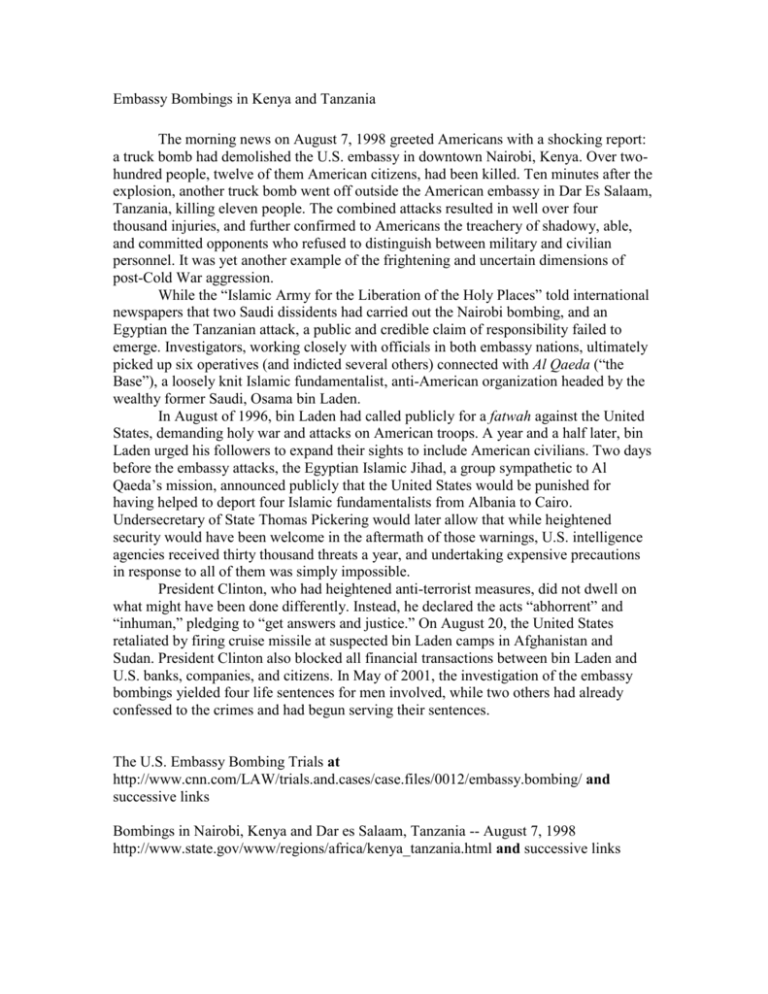
Embassy Bombings in Kenya and Tanzania The morning news on August 7, 1998 greeted Americans with a shocking report: a truck bomb had demolished the U.S. embassy in downtown Nairobi, Kenya. Over twohundred people, twelve of them American citizens, had been killed. Ten minutes after the explosion, another truck bomb went off outside the American embassy in Dar Es Salaam, Tanzania, killing eleven people. The combined attacks resulted in well over four thousand injuries, and further confirmed to Americans the treachery of shadowy, able, and committed opponents who refused to distinguish between military and civilian personnel. It was yet another example of the frightening and uncertain dimensions of post-Cold War aggression. While the “Islamic Army for the Liberation of the Holy Places” told international newspapers that two Saudi dissidents had carried out the Nairobi bombing, and an Egyptian the Tanzanian attack, a public and credible claim of responsibility failed to emerge. Investigators, working closely with officials in both embassy nations, ultimately picked up six operatives (and indicted several others) connected with Al Qaeda (“the Base”), a loosely knit Islamic fundamentalist, anti-American organization headed by the wealthy former Saudi, Osama bin Laden. In August of 1996, bin Laden had called publicly for a fatwah against the United States, demanding holy war and attacks on American troops. A year and a half later, bin Laden urged his followers to expand their sights to include American civilians. Two days before the embassy attacks, the Egyptian Islamic Jihad, a group sympathetic to Al Qaeda’s mission, announced publicly that the United States would be punished for having helped to deport four Islamic fundamentalists from Albania to Cairo. Undersecretary of State Thomas Pickering would later allow that while heightened security would have been welcome in the aftermath of those warnings, U.S. intelligence agencies received thirty thousand threats a year, and undertaking expensive precautions in response to all of them was simply impossible. President Clinton, who had heightened anti-terrorist measures, did not dwell on what might have been done differently. Instead, he declared the acts “abhorrent” and “inhuman,” pledging to “get answers and justice.” On August 20, the United States retaliated by firing cruise missile at suspected bin Laden camps in Afghanistan and Sudan. President Clinton also blocked all financial transactions between bin Laden and U.S. banks, companies, and citizens. In May of 2001, the investigation of the embassy bombings yielded four life sentences for men involved, while two others had already confessed to the crimes and had begun serving their sentences. The U.S. Embassy Bombing Trials at http://www.cnn.com/LAW/trials.and.cases/case.files/0012/embassy.bombing/ and successive links Bombings in Nairobi, Kenya and Dar es Salaam, Tanzania -- August 7, 1998 http://www.state.gov/www/regions/africa/kenya_tanzania.html and successive links Raphael F Perl “Terrorism: U. S. Response to Bombings in Kenya and Tanzania: A New Policy Direction?” (Congressional Research Service - The Library of Congress) at http://usinfo.state.gov/topical/pol/terror/crs98091.htm “Embassy bombs: The FBI trail” at http://news.bbc.co.uk/hi/english/world/americas/newsid_1359000/1359752.stm

